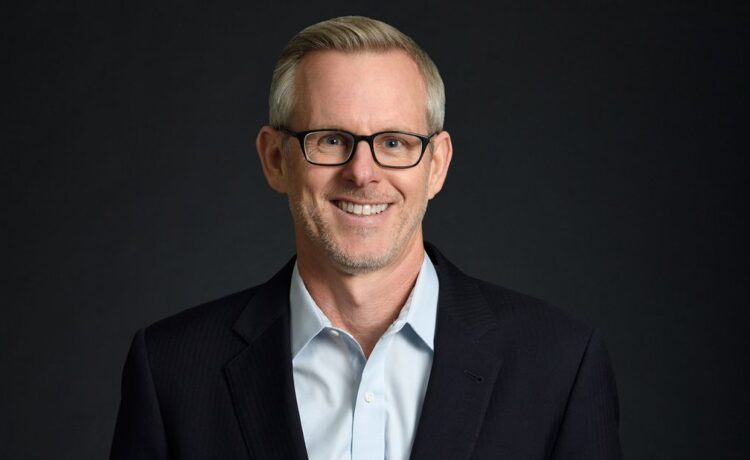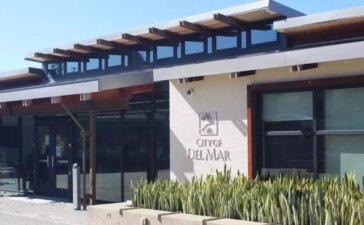Todd Henderson is the head of Real Estate for the Americas and the global co-head of real estate at DWS, the trillion-dollar asset management arm of Deutsche Bank. The publicly-traded firm is active in both passive and alternative investments, with a $120 billion book in alternatives, $70 billion of which is in commercial real estate.
Henderson has been in real estate finance for 34 years, and made his bones during the Savings & Loan Crisis of the early 1990s. He sat down with Commercial Observer in late 2024 to discuss how he plays up and down the capital stack, the state of office (and how he extricated DWS prior to the sector’s collapse), and what he learned from the Savings & Loan crisis.
This interview has been edited for length and clarity.
Commercial Observer: So you’ve been in commercial real estate for nearly 34 years. How did you get into the business?
Todd Henderson: It’s kind of funny. I grew up in a small town in East Texas, where the people in my town who seemingly — from a narrow view of a young teenager — seemed to be doing well, were all people in the oil and gas business and people in the real estate business. Those were the two areas I went to college interested in, and when I graduated neither one of them had many jobs available: Oil was trading in the $20 per barrel range, and real estate was in one of the worst recessions it’s ever been in.
The first opportunity I ever got was to work for a bank formed out of Resolution Trust Corporation, where I worked for a “bad bank” liquidating all the bad loans. From there I worked for a real estate private equity firm called J.E. Robert Companies in Washington, D.C,. and I was there for 10 years. My primary experience there was on the transaction side, buying real estate for our funds and clients. Then I joined RREEF [a business that was acquired by Deutsche Bank in 2003] and that is the business that I now lead today. When I joined as a transaction professional, I ran our value-add and development business for a number of years, and I was the first CIO for our real estate business in the Americas. In 2012, I became head of Americas real estate business, and in 2020 became co-global head of our real estate business which is now called DWS, still the RREEF business, but it is under the DWS name which was Deutsche Bank’s asset management business that we took public 2018 and branded DWS.
Are you more focused on investing in real estate investment trusts or physical assets themselves?
We have two pieces of business: a liquid real assets business that invests in liquid securities, not just real estate but infrastructure, and that business is $8 billion of real assets under management. And then we have a real estate business that is invested in private assets, and that’s plus or minus $70 billion. The lion’s share of what we do is investing directly into real estate. That being said, we do advise clients into investing across global REITs, whether they be European, U.S. or in Asia.
How much of your investment strategy breaks down into credit versus equity?
So we invest across the risk-and-return spectrum and up and down the capital stack. From a core real estate investment with our flagship fund RREEF for American REIT II, to the non-core strategies, we have single-sector strategies in the residential and in the industrial sector. Those are up the risk spectrum; we have up to 25 percent to 30 percent of them in ground-up development. Today, we probably have $6 billion or so on the books of ground-up development within the U.S. alone, which represents about half of that $70 billion, so $35 billion. So we’re across the risk-and-return spectrum in terms of our equity book and the risk we take.
In terms of our credit business, that today globally represents about 5 percent of our overall assets under management. It’s a big focus, though, for us on a go-forward basis. We just hired a team in the U.S. out of J.P. Morgan that ran a $13 billion credit book to add to our existing team here in the U.S. We’re really excited about the opportunity. Our goal is to be a top five provider of real estate credit in the space, which is a lofty goal, but we think the opportunity presents itself by virtue of the capabilities of our team, and also the market opportunity we think that exists and is coming our way because the traditional providers of credit, the banks, have pulled back materially, and we think they’ll stay muted in terms of the activity as a result of legislation and regulation.
Where does your capital come from?
It comes from a lot of different areas, but I’d summarize it predominantly as institutional capital and retail capital. Institutions from pension plans to sovereign wealth, and retail capital being in the wealth space across the different distribution channels within wealth, whether that be the wirehouses, the IRAs and the independent broker dealers. So that entire universe is where we distribute what we do and raise capital for what we do. In fund format, 65 percent of our asset base is in funds, maybe pushing 70 percent, with the remaining is in separate managed accounts.
Which assets and markets have you been active in recently?
So we cover 26 markets in the U.S., across the four major food groups of industrial, office, retail and residential, and we also invest in the alternative and niche sectors, single-family rental, self-storage, medical office, life sciences. So it’s pretty broad mandate in terms of what we do in 26 markets, and those markets you could probably guess them — the criteria is typically population and job growth, high barriers to entry from a supply perspective. What this generally has us doing is looking more at markets located in the Southeast, Southwest and Mountain West because that’s where we’re seeing most job growth and population growth, which is generally good for real estate.
In terms of sectors, we’re bullish on the industrial and residential sector. Those sectors have improving fundamentals, predominantly as a result of the supply pipeline shutting down: We’re down 70 percent of new starts in both residential and industrial. Residential currently has a better demand story, it was the second highest on record [earlier last year]. That, combined with the deteriorating supply picture, bodes well for residential and rental NOI growth. On the industrial side, it’s the same story in terms of new starts being down. However, the demand scenario is still a bit slower, and we think that’s a COVID hangover. We saw the same thing happen in residential areas, but now it’s come back very strong. Drivers of industrial demand that were responsible for the run-up are still there today: the growth of e-commerce is still at same pace as pre-COVID, we think that will continue to bring demand, the onshoring story continues to be a strong component of demand, GDP growth has been the traditional component of demand, and GDP remains strong at 2.8 percent in most recent quarter. Those are sectors we like.
You had mentioned that you’re not bullish on the office sector. How did you manage the post-COVID transition away from office?
We sold, interestingly enough. We were able to find liquidity within our office portfolio for assets we wanted to sell. Obviously, we looked closely at the amount of capital we deployed relative to NOI in office. With office, you have a high capital component per unit of NOI. The more you spend there, the more risk you have of underperformance. We’ve managed the best we could to drive outcomes at our properties, but it’s been difficult. When you have office vacancies at peaks higher than when I started my career during the S&L crisis, and you don’t really have a recession driving the deterioration in the demand but a change in how people work, that’s challenging. We’ve done the best we can do, although our office valuations have seen material destruction in value. The best thing for us was that we had already managed our office allocation in our portfolio construction to be the lowest in the four major food groups prior to the pandemic. It came back to this consideration: The less capital you spend per unit of income, the better consistency you have in terms of income returns and better performance you get. So we moved our portfolio to a more Class A, trophy office, but the market is a challenge and will continue to be challenged.
What was the Savings & Loan Crisis like, and how was it different from this most recent crisis? How has it informed you in your real estate investment career?
It was very different. I went through the S&L crisis and the GFC and the tech wreck between those two, and then COVID. What’s different about this time though is we didn’t have a recession. Every other time we had a recession that was associated with the underperformance of the asset class. Typically the recession led to that underperformance.
What happened in the S&L crisis was idiosyncratic to the tax code and changes to the tax code. The S&Ls provided really high loan-to-value loans that created passive losses, and that helped from a tax perspective. But when tax loans changed, the passive loss was no longer part of the tax code, and you had all this over-leveraged real estate, so overnight you had bankrupt the S&Ls. It was a different situation than what happened with the GFC, but when I mention the S&L crisis when comparing office performance in that time period to what we see in terms of vacancies during this time period, what’s interesting to me is even without an economic recession, we’ve seen vacancy levels in office that exceeded vacancy levels that we saw in one of the worst real estate recessions ever. What did I learn? Leverage magnifies results, good or bad through that time period, and that resets are painful. Those that reset quicker get back to market in making deals and transacting, and they recover that much faster. Try to solve the challenges as soon as you can. Encouraging banks to come up with creative solutions is important to recovery, as well. But there was one other thing really interesting to that time period that isn’t talked about enough.
What is that?
It was also one of the greatest transfers of wealth. By that I mean, if I’m a bank and you’re a borrower, the loan is underwater, you can’t pay debt service, so I then foreclosure on you. Then I turn around and sell the loan to someone and give them financing. They’re basically in the same position as you are, but just didn’t want to deal with you. The bank wanted to deal with someone new. That wealth transferred to that individual by virtue of the bank not wanting to deal with you. I still think that banks, except for bad actors, should be willing to transact with and work with those borrowers who know the assets and are ready to commit more money, if they will just buy time in the loan and provide liquidity. I think outcomes typically are better than taking a big discount on the sale of the loan and then providing financing to a new buyer. I don’t think that makes sense from a banker’s perspective. The bankers clearly haven’t learned that through these multiple recessions because they still operate from the same playbook.
Where do you like to play in the capital stack?
I like playing both equity and debt in the capital stack. I think there are good returns up and down and across the risk spectrum. From a lending perspective, and from equity perspective, market values have reset, underwriting is more conservative on the debt side, attachment points are lower than they were. If you are a lender, you want to lend into a market where values have reset, where underwriting is conservative, attachment points are lower, and where spreads are wide as historical norms. From a relative value perspective, corporate credit spreads are as tight as they have ever been, but real estate credit spreads are at norms. So not only is real estate lending attractive due to fundamentals, it’s attractive because it spreads relative to historical levels.
On equity I see values increasing from here. Demand is strong and we think it’s poised to be strong. Supply is down significantly from historical highs. We think that proves there are points to grow rent and grow NOI. It’s a precursor for solid returns, especially when yields have reset to reflect current cost of capital.
What’s your investment ethos?
Keep it simple. It’s the KISS method: keep it simple, stupid. Also, debt magnifies results, both good and bad, and replacement cost and key fundamental underwriting is important to outcomes.
Brian Pascus can be reached at [email protected]
















